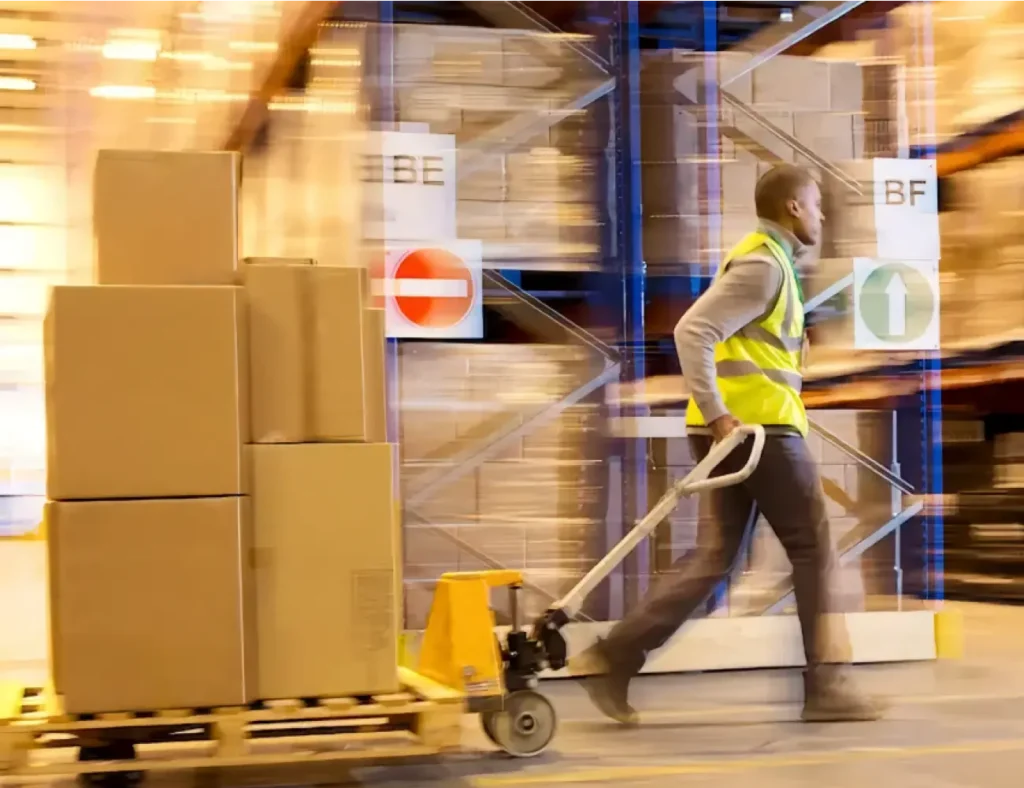Welcome to the topic “Why Warehouse Vacancy is Rising in 2024“
The warehouse real estate market has seen an unprecedented amount of change in the last several years. During the pandemic, there was a nationwide rush to build new warehouses to keep up with the spike in online shopping. However, the boom in construction slowed last year due to growing concerns about inflation and recession. These economic uncertainties also made businesses more cautious about leasing new warehouse spaces leading to the rise in vacancy rates.
However, there are signs that the demand for warehouses might not decline as quickly as feared. Consumer behavior has shown some resilience, suggesting that the need for warehouse space could continue for a while longer. This gives a mixed outlook for the market, with both challenges and opportunities on the horizon for business owners and developers.

Vacancy Rate Increases
According to Colliers International, the vacancy rate for industrial spaces increased slightly from 5.17% in Q3 to 5.25% by the end of Q4 2023. This rise in vacancies is a shift from the record-low 4.5% vacancy rate seen in 2022. The increase in vacancy rates indicates that the high demand for warehouse spaces is starting to lessen post-pandemic.
This trend also suggests that the market is beginning to normalize after the unprecedented boom. As more spaces become available, businesses might find better leasing opportunities in the market as landlords face more competition to fill their properties; potentially leading to more attractive lease terms for tenants.
Surge in New Developments
The cause for the rising vacancies is due to the huge increase in new warehouse development. During the pandemic, companies needed more space for online orders, spurring a boom in construction. In 2023 alone, developers added 40.2 million square feet of new industrial projects, significantly more than the 31.4 million square feet built in 2022.
This rapid expansion was driven by the need to keep up with the sharp spike in online shopping and supply chain demands. However, as the market starts to balance out, the question remains whether all this new space will find tenants quickly. This overbuilding might lead to increased vacancies in the short term but could also provide long-term growth opportunities as demand levels out.
Overbuilding Concerns
Some experts worry that too many new warehouses were built in the past few years. Especially since about 82% of the new construction projects were speculative, meaning that the properties didn’t have tenants contracted to lease the space before construction.
As the state of the U.S. economy became more uncertain, demand began to slow, leading to more empty spaces and making it harder for developers to find tenants.

The overbuilding has also weakened the negotiating power that industrial landlords previously held in normalized markets.
With more available spaces and fewer immediate tenants, landlords might have to offer more concessions to attract businesses into their properties. This shift will likely lead to a more tenant-friendly market, with better deals available for companies looking to lease industrial space.
The Consumer Optimism Impact
Recent data also suggests that consumers are feeling better about the economy, which might increase the demand for warehouse space as people are more willing to spend in the market.
David Bercu from Colliers said that as consumer confidence improves, businesses might need to increase their inventories – needing more warehouse space to accommodate for growth.
This positive outlook from consumers could be a sign that the market will rebound sooner than expected. If businesses feel more confident about future demand, they might start leasing more space again, leading to a quicker recovery in the warehouse market. This could also spark renewed interest in the completed new developments, balancing out the current oversupply.
Future Expectations
Currently, Colliers still expects more empty spaces, as they predict 10.7 million square feet of new speculative projects will be finished this year. This influx of new supply, if not matched by an increase in demand, could raise vacancy rates even more by the end of 2024.
This increased availability of space might also present opportunities for businesses looking to expand or relocate. With more options on the market, companies could find better deals and more suitable spaces for their needs. This could help stabilize the market as new tenants fill the available spaces, and eventually reduce the vacancy rates.
Continued Construction
Developers often continue building even when demand is low, hoping for future market recovery. This approach means that even during economic downturns, new projects keep coming online, potentially leading to an oversupply. If the economy improves and consumer spending increases, the extra warehouse space might get filled over time, matching supply with demand.

This proactive building approach can help developers avoid shortages in space that could occur during another market upswing. Additionally, having new, modern facilities ready can attract tenants looking to upgrade from older, less efficient spaces.
While there are risks associated with overbuilding during downturns, this approach helps maintain a steady flow of new developments, ensuring that the market remains positioned to respond to various economic changes.
Looking Ahead
Industry experts are hopeful about the future of the warehouse market. Despite the current challenges, warehouses remain a key part of the economy, supporting important logistics and supply chains for various online and offline businesses.
While warehouse vacancy rates increased due to economic uncertainties and rapid development, there are signs of possible growth in the future. Businesses, investors, and developers alike should watch market trends closely to take advantage of opportunities as consumer demand and market conditions change.
Also read: Reviving Retail in Chicago’s Lincoln Park
TAGS